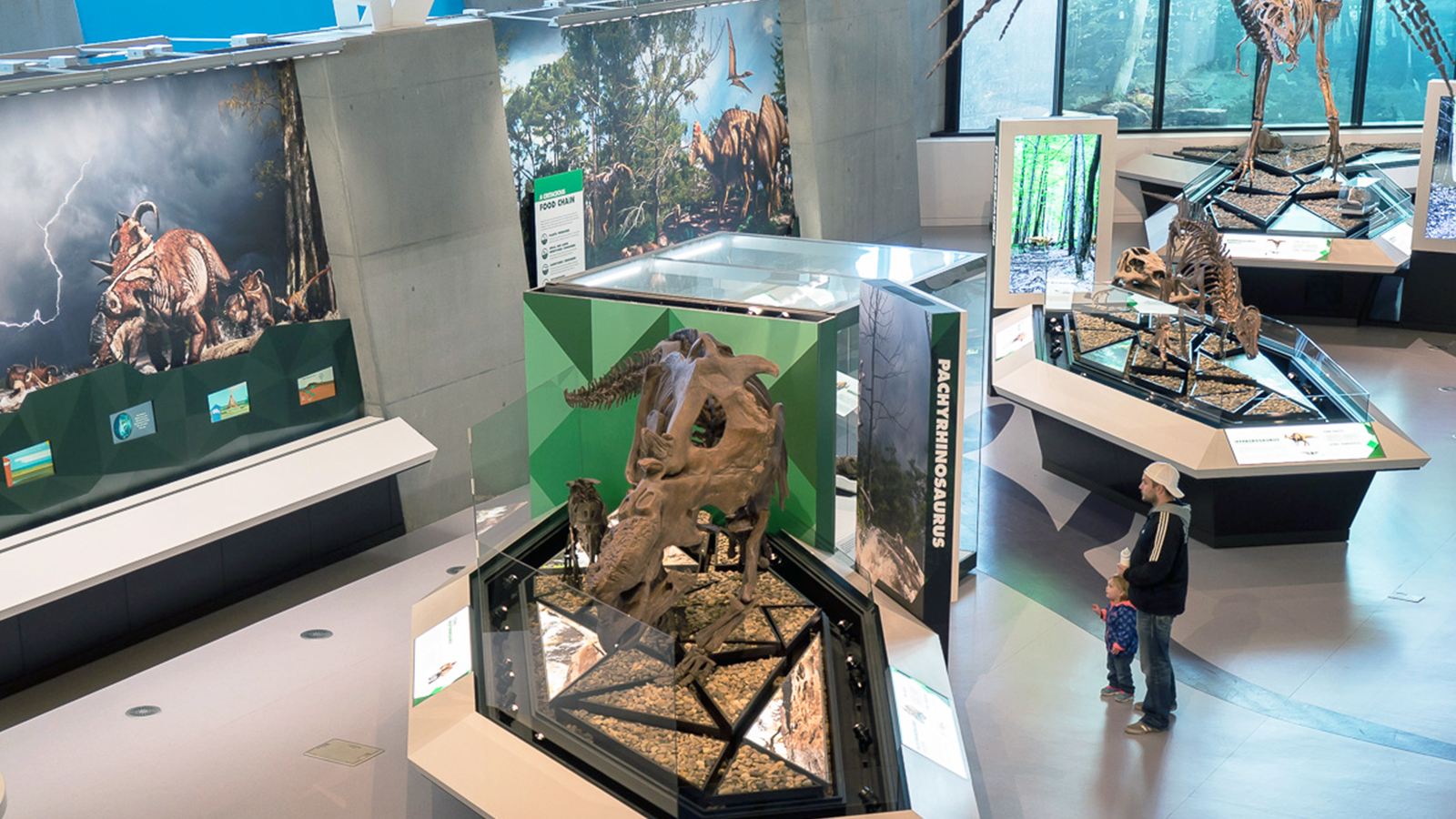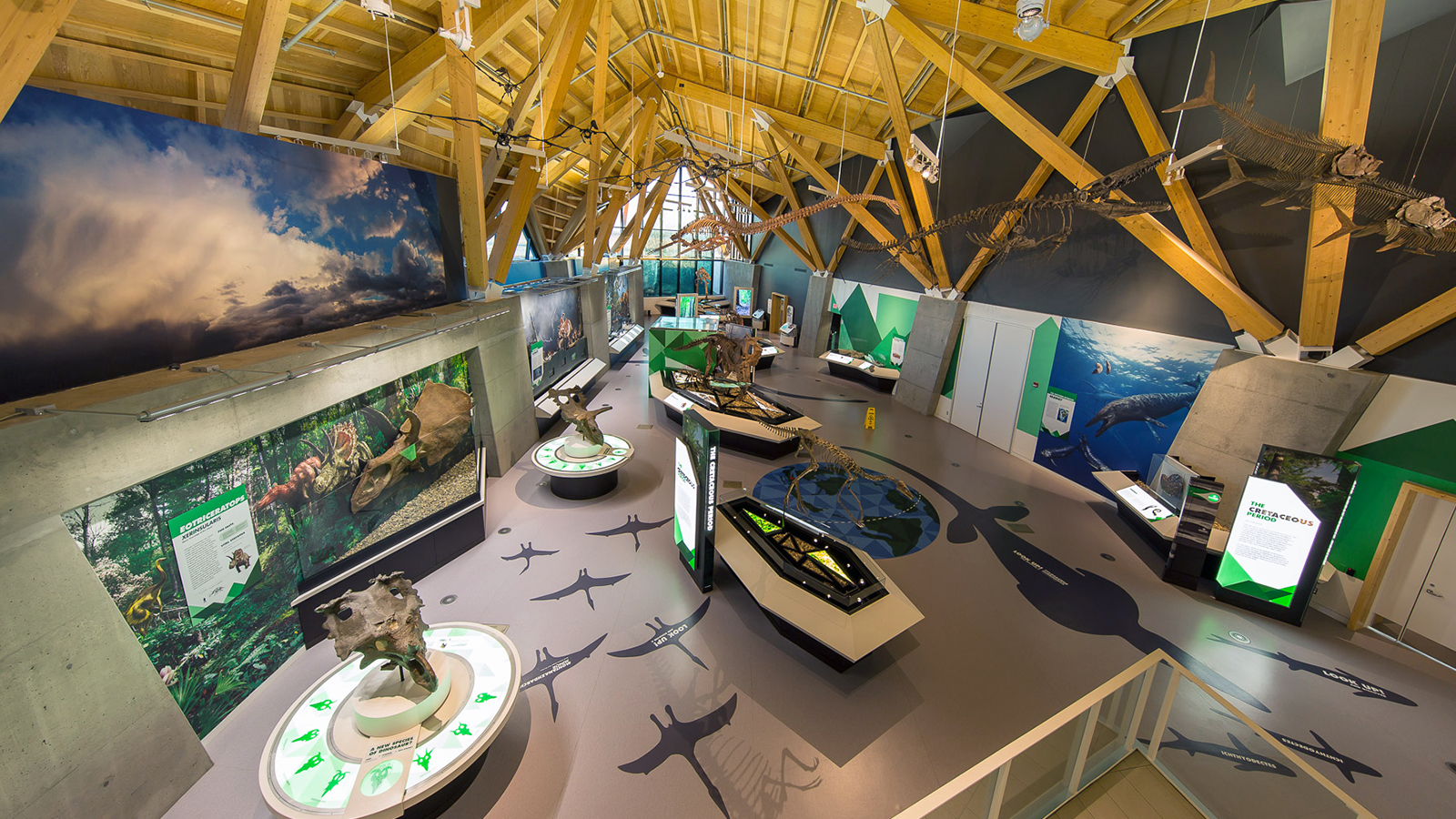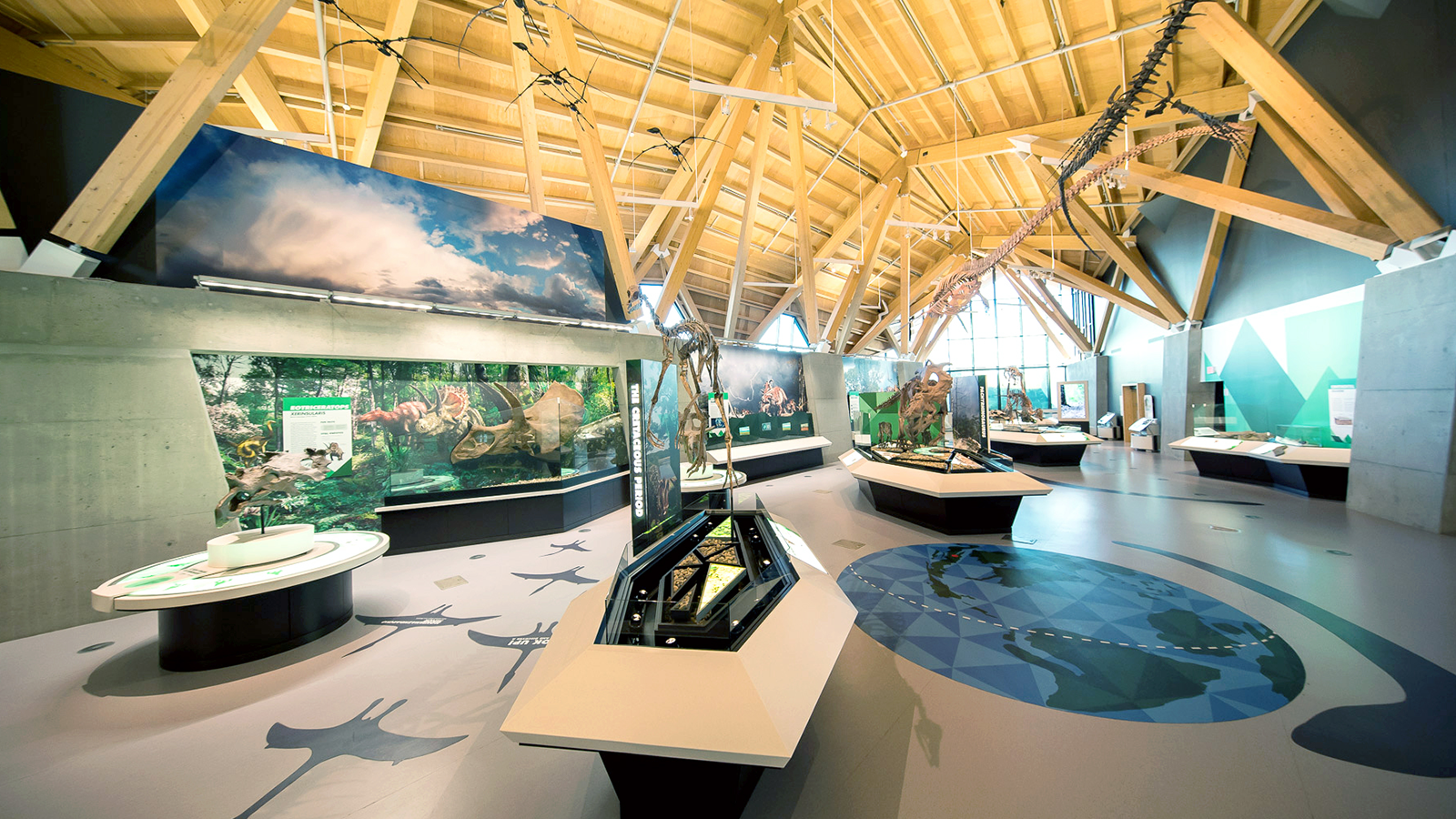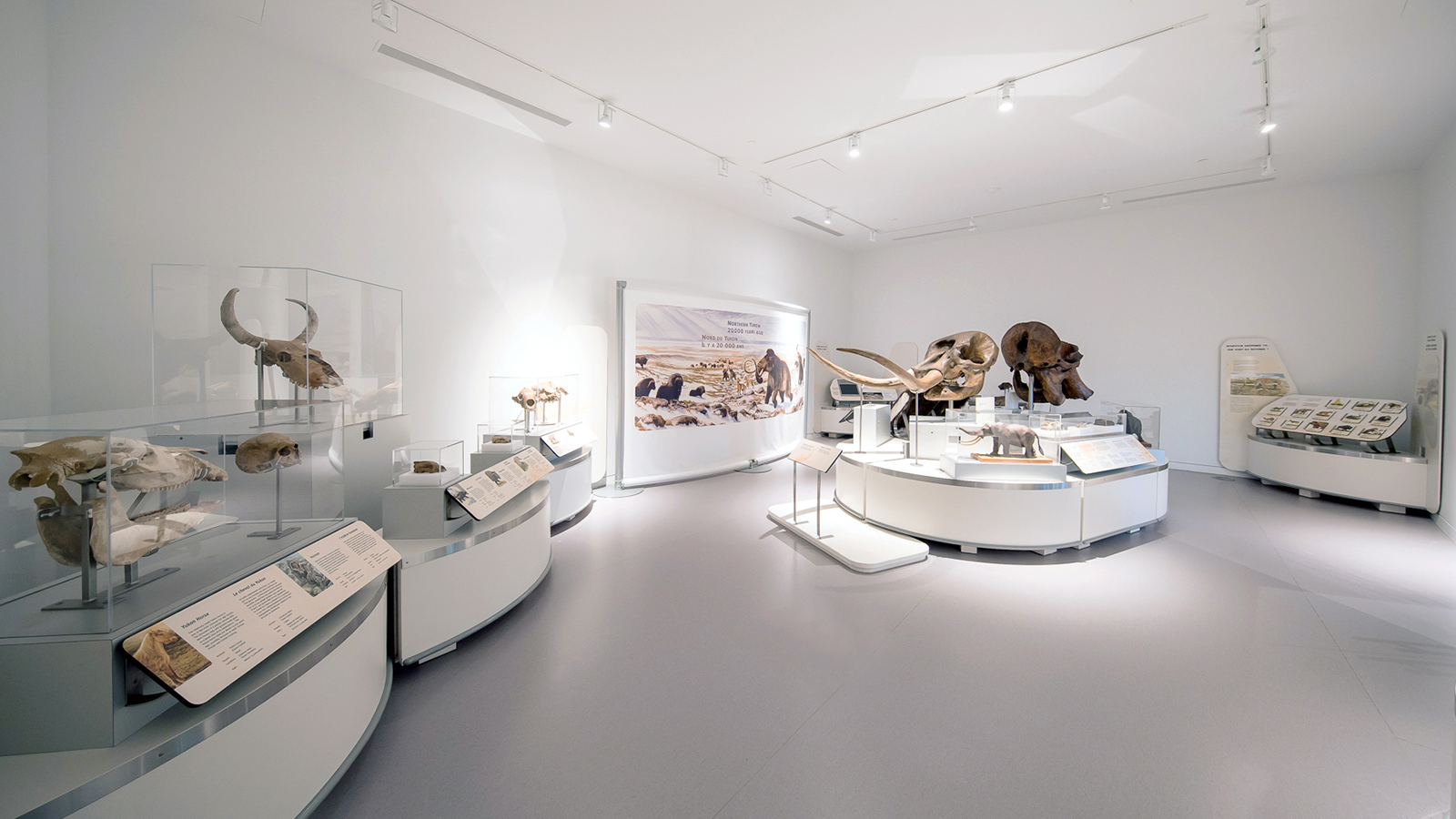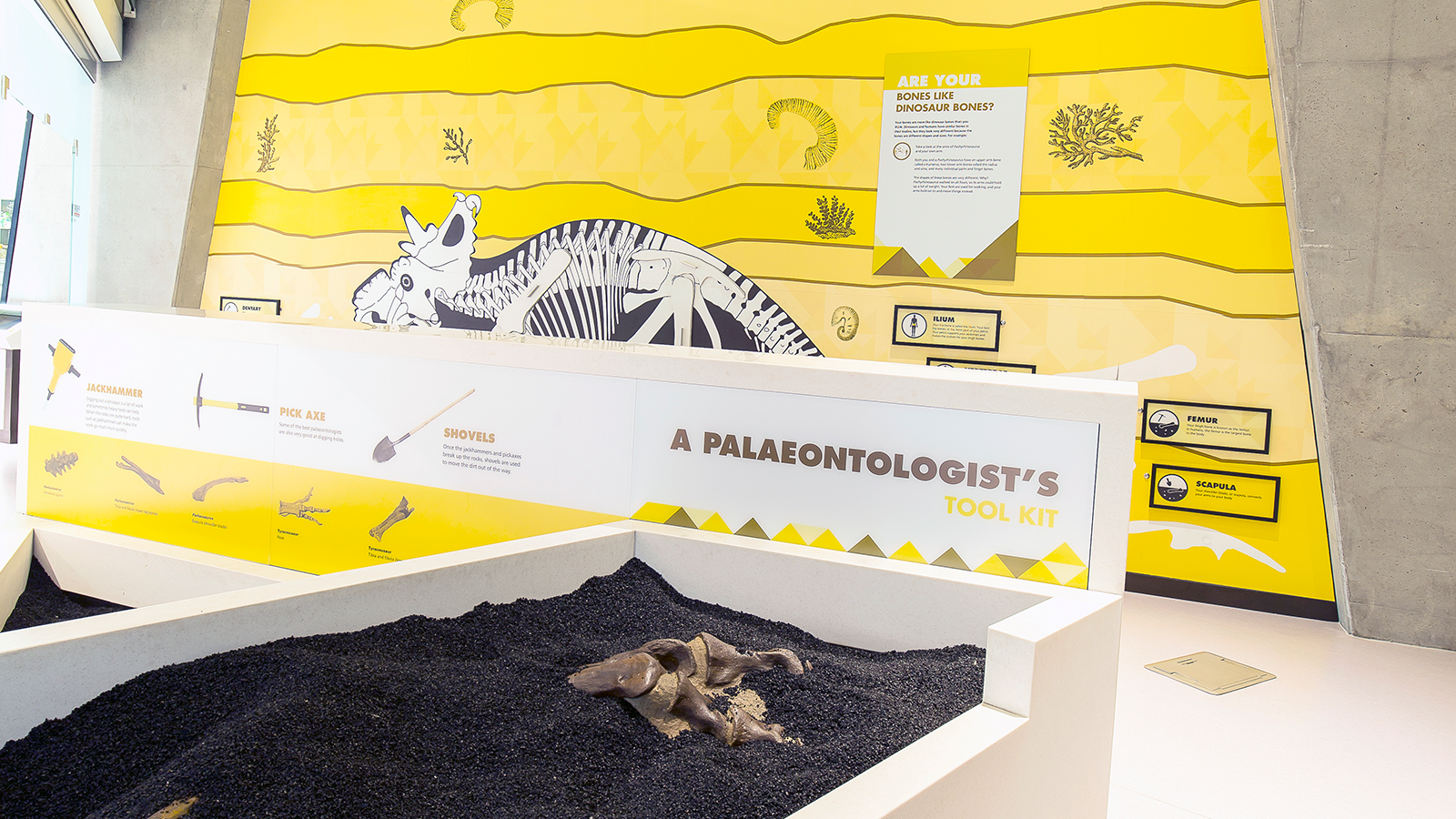Philip J. Currie Dinosaur Museum
Wembley, Alberta
Project Size: 12,400 square feet
Designers: Reich and Petch
Bringing History to Life
The Philip J. Currie Dinosaur Museum in Alberta, Canada, brings life to the rich history of those who roamed the earth millions of years before our time.
Upon entering the Philip J. Currie Dinosaur Museum, you are welcomed to the striking main gallery. The space is designed with a soaring roof and wood sloped ceilings, which reach 30 feet in height.
The main gallery displays seven platforms with full dinosaur skeletons and additional dinosaurs hanging from the ceiling. The close-up display of each dinosaur is truly remarkable as visitors can connect with them much closer than they would in a traditional museum. The dinosaurs hanging from the ceiling are mirrored with their full size on the floor, allowing visitors to understand their vast size.
The finishing touch to create a truly captivating gallery is the audio display aired over the speaker system. Allowing visitors to immerse themselves into the world of the dinosaurs, the Currie Dinosaur Museum plays the sounds of the wildlife overhead, complete with dinosaur roars and screeches.
Potentially the most inviting and interactive exhibit through the museum is the Fossil Lab. Visitors of any age can learn the very basics of Paleontology as they dig in soil and discover fossils. This is the beginning of the hands-on experience.
Hands-On History
kubik maltbie was awarded the contract and upon adopting the incredibly innovative design plans from Reich and Petch, brought 65 million-year-old history to life in Alberta, Canada. Our specific scope of work included the exhibit detailing and fabrication, AV hardware integration, media production, and installation.
The most complex challenge we faced upon executing the project was determining the exact locations and spacing of the existing mounts for the dinosaurs. Not only were we trying to gather and coordinate that information from several different parties, but many of the dinosaur skeletons were stored off-site or in a crate in a warehouse, so getting them unpacked just to determine mount locations required a great deal of coordination. Though, as each obstacle was resolved, the museum was on budget and ready come opening day.
Watching visitors explore the museum brings the work to life and provides a thrill for all parties involved in its creation.

